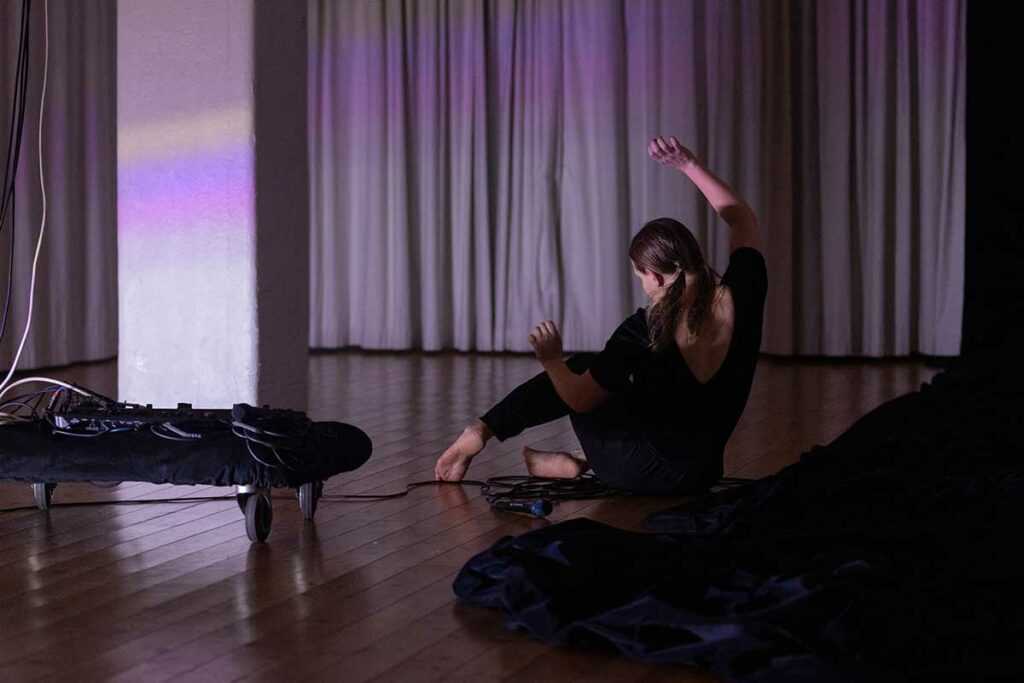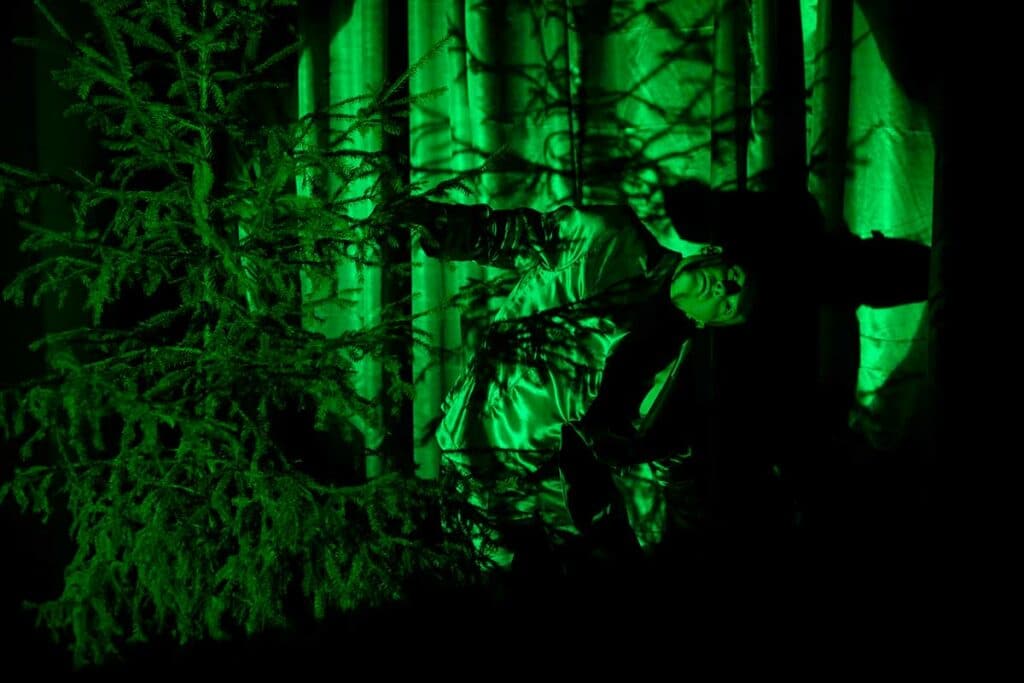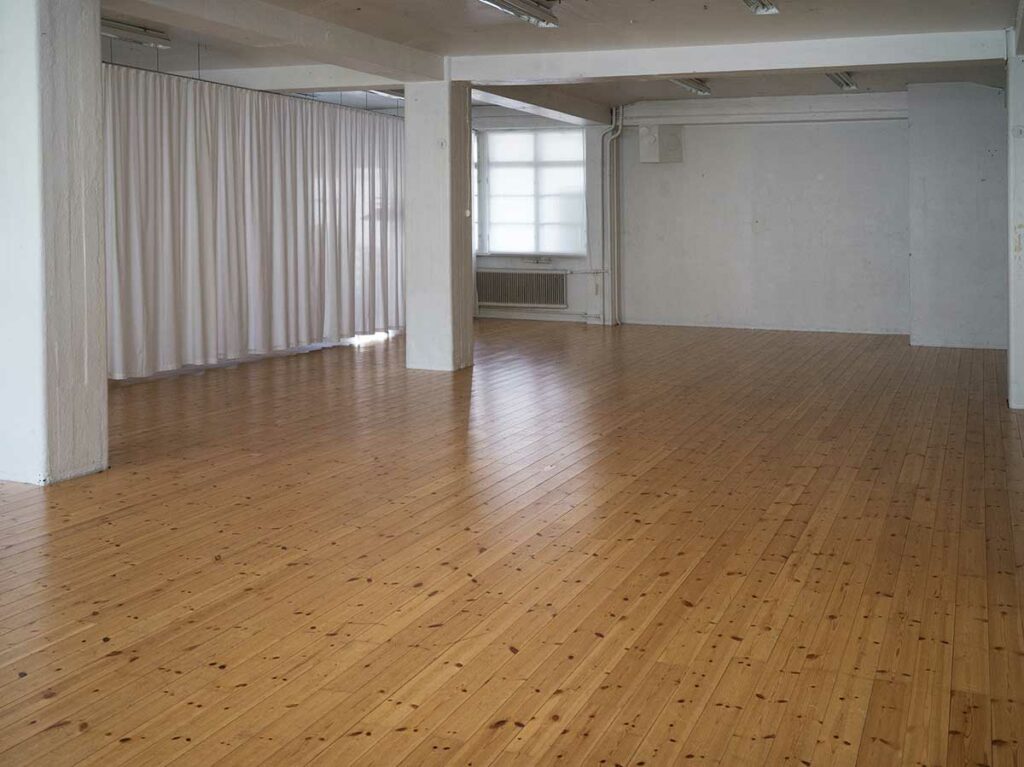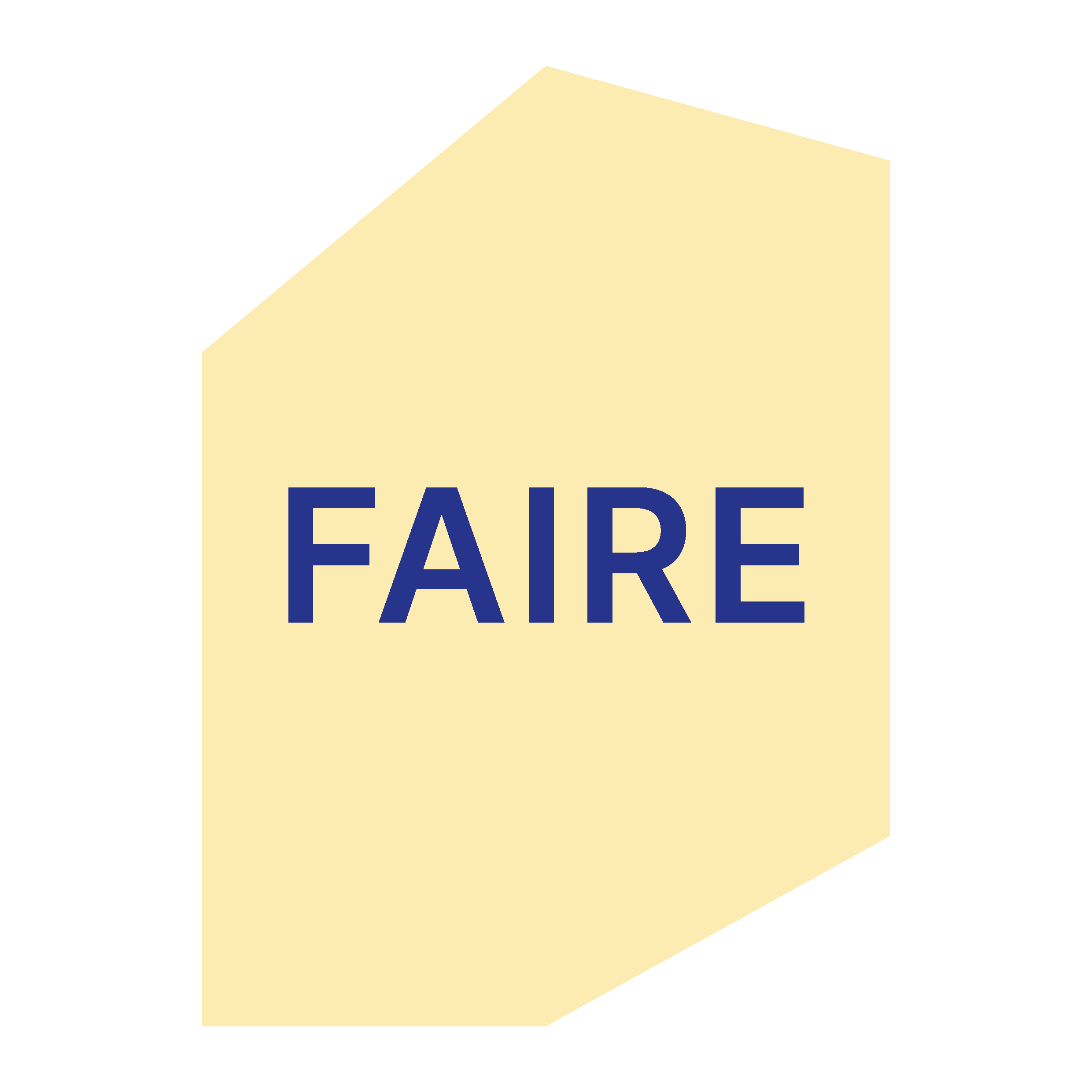17.1.2023
Interview: Petra Vehviläinen
Images: Katri Naukkarinen, Venla Helenius and Hertta Kiiski
The article is part of a series of interviews which presents various Finnish residency providers and examines the role of residencies in the field of art and in the society.
Interview with Anna Torkkel, founder and artistic director of Ehkä-production.

Kutomo is a contemporary art space in Turku, which in addition to its performance and workshop activities, offers working space and residencies to a large number of contemporary dance and performance artists every year. “Managing, curating and running the Kutomo space is a big part of Ehkä-production’s wide-ranging and diverse activities, beyond the residency activities,” says Anna Torkkel, artistic director of Ehkä-production. Ehkä-production was founded in 2004 to support the work and working opportunities of artists within the independent arts field. Currently, Ehkä-production is managed by three permanent, part-time employees and a number of project-specific staff in various positions. Joining Torkkel, is producer and financial officer Maija Reeta Raumanni and the production coordinator Maria Granlund, who started in 2020. They are responsible for the coordination and communication of Ehkä-production.
The Kutomo residency is aimed at individual artists or groups of artists working in Finland. Torkkel says that international activities are generally excluded as they require a lot of resources. It has been considered more economically viable to direct the small discretionary grants to support artists working in Finland. Torkkel considers it particularly important that the year-round residency aims to meet the needs of artists in terms of working space. “There is a constant shortage of performance and working spaces of reasonable size and price. In the dance and performing arts field, there are ultimately very few opportunities to present work in a facilitated and curated way,” says Torkkel.
As well as free working space, those who come to Kutomo’s residency will be offered accommodation and a travel allowance for out-of-towners. Often the works that come to the residency are also part of the Ehkä-production, so the residency covers part of the working time needed to produce the work. The residencies last from a weekend to a week or even three weeks. At best, there can be a few residencies per month, and around twelve per year. As part of the residency – if the working group so wishes – the possibility of some form of sharing or event is offered. However, this is not a requirement of the residency and is in no way expected of applicants.
“My own experience of residencies where there has been a requirement for some kind of final presentation at the end of the residency has been that the whole residency time can be spent planning and stressing about that”, Torkkel reflects, “We want to work in an artist-centred way. If an artist wants to free up their working time just to work, we want to allow that”.

Applications for residency are invited through an open call in the spring. In the same call, there is an option to apply for other parts of the Ehkä-production: co-productions, guest performances and workshops. Decisions have been made by the five-person Ehkä artistic working group from 2016 to 2022, but following the organisational change, the selection will be made by an externally invited curator together with Torkkel. This is intended to increase turnover and transparency. The selection will be based on the artistic interest of the proposals and whether the work can be carried out within the framework offered by Kutomo. “The aim is to make the work as pleasant as possible for the artist and for us. It is important that the artist understands where they are coming to and that the framework supports the work they want to do,” says Torkkel, “The objective of the curating process is to form a selection of residency projects that would be artistically interesting and that can be meaningfully realised”
Torkkel says that since its inception, Ehkä-production has sought to work in and for the field of independent arts. The goal has been to shape the activities in an artist-centered way. “We started from scratch and that continues to define our work. In the early years, everything we did was coloured by the fact that all the work was done on a voluntary basis. There had to be some kind of sense of purpose that permeated the activity to make sense of it,” laughs Torkkel. “We are aware that we are on the margins in terms of many resources and also artistically. Therefore artist-centeredness and enabling the conditions for artistic work is what we are allowed to focus on. The value of our activities lies in artistic content and artistic work,” Torkkel concludes. The aim is to create permanent structures for artistic work – primarily through the Kutomo space, but also financially and productively. “It is not yet possible to receive financial compensation for the residency, but work is being done to ensure that monthly salaries and performance fees can be paid for some co-productions and performances each year,” says Torkkel. “Increasing financial resources is a constant goal, and the possibility of paying artists for their work. The kind of (residency) work that doesn’t produce any end result.”
The Ehkä production also collaborates extensively with other actors in the performing arts field. Often the works in the programme are co-productions or part productions with other performing arts or dance institutions. Through its residencies, Ehkä enables performances widely throughout Finland. Torkkel says that there is regular cooperation with production companies in the Helsinki metropolitan area, such as the New Dance Centre Zodiak and the Baltic Circle Festival. “A lot of works have visited Kutomo’s residencies,” Torkkel laughs. “Local and active partners include the Titanik Gallery, the artists of the Poesia co-operative and the experimental music community Himera, as well as individual artists working in the area,” Torkkel adds. In addition, the interests and needs of the artists and working groups coming to the residency will determine the patterns of collaboration.

Among the artists, the Kutomo contemporary art space is seen as an interesting stage. Torkkel feels that the Ehkä-production is an important player in the field of new dance and performance art and a significant enabler precisely because of its artist-oriented approach and Kutomo’s spatial resources. “The feedback keeps coming back that it is really wonderful to work here. A lot of people find the studios comfortable and that they are good to be in. And that we have a nice spirit in these spaces. The Ehkä- production is organically structured and has been underpinned by our values of enabling people to work. We wanted Kutomo to have a positive atmosphere. It’s nice to get feedback that it feels in these spaces. For example, in the metropolitan area, there are not many spaces that are suitable for working and also reasonably priced. The feedback we get all the time is: this is amazing!”
